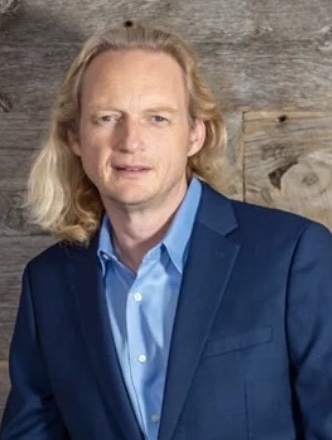
I'll never forget my first day as a high school teacher in America. My dream was pretty simple: Mold eager minds into future science, technology, engineering and math leaders who will help define the 21st century.
My reality was a little different.
I walked into the classroom armed with a mathematics degree from the University of London, a little prior teaching experience at a small prep school in rural England, and grand ideas about changing the world and inspiring my students. I thought I was ready to take my kids on a journey through math that they would remember for the rest of their lives.
Boy, was I wrong.
I discovered that most of my students were repeating basic algebra—some for the third time—and many struggled with even routine elementary math problems. They'd switched off to math long before I met them, and here I was, teaching them in the same way I'd been taught: I wrote on the board, walked through the exercises, then asked the kids to solve the problems in the book. I was telling them how math works instead of letting them learn by doing the math.
Then a trip to the supermarket sparked inspiration. I bought loads of candy and created a new type of math lesson that challenged students to figure out why a manufacturer would choose to produce a chocolate bar shaped like a triangular prism. By investigating the geometry of chocolate (as outlined in the video below), my students determined that the shape actually gave them less candy for more dollars.
The best bit: I didn't tell them how to find the answer. They came up with solutions on their own and, in so doing, began to learn a much bigger lesson—that math is more than just numbers. It's the language used to describe the incredible world around us.
Here's a video where I talk about how everything changed for me as an educator after this experience:
"The Geometry of Chocolate" TEDx Talk
To recap, I threw out my textbooks and redesigned every single math lesson using intriguing puzzles and hands-on problems with real-world applications.
Before I knew it, test scores went up, and more than 85 percent of my students passed classes they had previously failed. Better yet, they found a love for math.
I spent the next five years teaching mathematics, physics and computer science. I helped my school integrate technology into the classroom and utilize project-based learning to engage our students' critical thinking skills.
Later, I joined the Los Angeles Unified School District as a mathematics expert, training thousands of teachers to do what I had done in my own classroom. It wasn't easy. Many teachers struggled with the idea of change, and most of the technology I encountered simply replicated the same dry teaching methods we'd been using for more than a century.
Then one day, during a routine visit to an elementary school in South L.A., I walked into a computer lab and saw kids fixated on screens, solving multi-step problems and having fun. Upon closer look I realized they were thinking several steps ahead, figuring out a sequence of rotations to help a little penguin across the screen. The software never told them how to do it. The program didn't even use any words or mathematical symbols.
Students got to try their own ideas, got to see whether those ideas were right or wrong, and got to experience the joy of solving a puzzle all on their own. In other words, they were learning by doing.
That was my first introduction to ST (stands for Spatial-Temporal) Math, a game-based instructional program for K-8 classrooms, designed to boost math comprehension and proficiency through visual learning. I found out the program was created by a little education and neuroscience nonprofit called MIND Research Institute, and that it was transforming math success for hundreds of thousands of students across the country.
I joined MIND soon after that, and today I'm helping to build interactive visual games that encourage students to solve challenging math problems on their own. My dream, all those years ago, when I first set foot in a U.S. classroom, is the reality in thousands of schools today, all across the country.
Through my own journey as an educator, I have come to discover that only by re-imagining math education can we give all kids a chance to compete in the global economy and define the 21st century.
For more information about ST Math:
To learn more about rigorous and engaging math instruction with ST Math, download the ebook, What Is Math Rigor?
A version of this post was originally published on this blog on July 8, 2014 and was also featured on Huff Post ImpactX.

Nigel Nisbet is the Vice President of Content Creation at MIND Education, a non-profit organization dedicated to equipping all students to solve the world's most challenging problems. He is also the author of the E-book “I think, I try, I learn” and presenter of the TEDx talk “The Geometry of Chocolate."
Comment